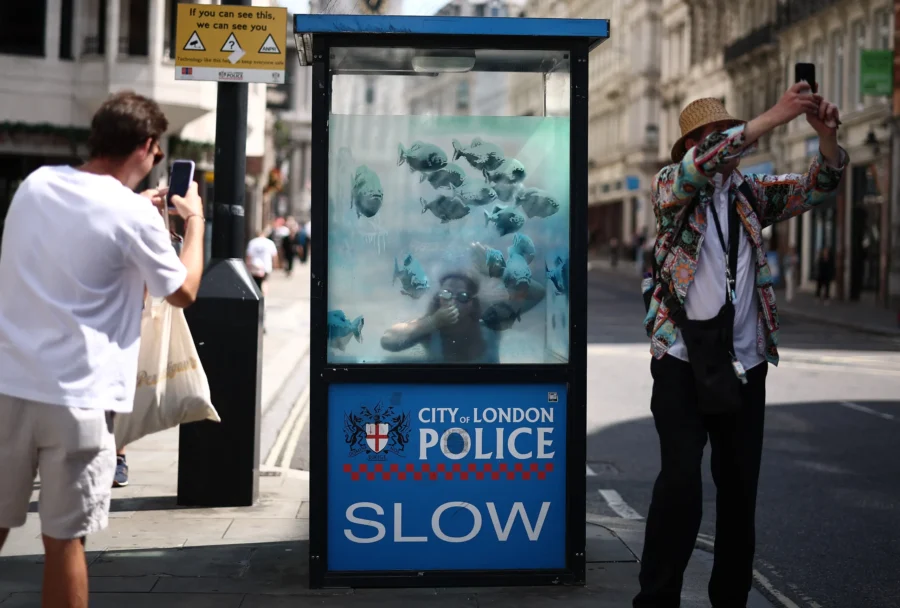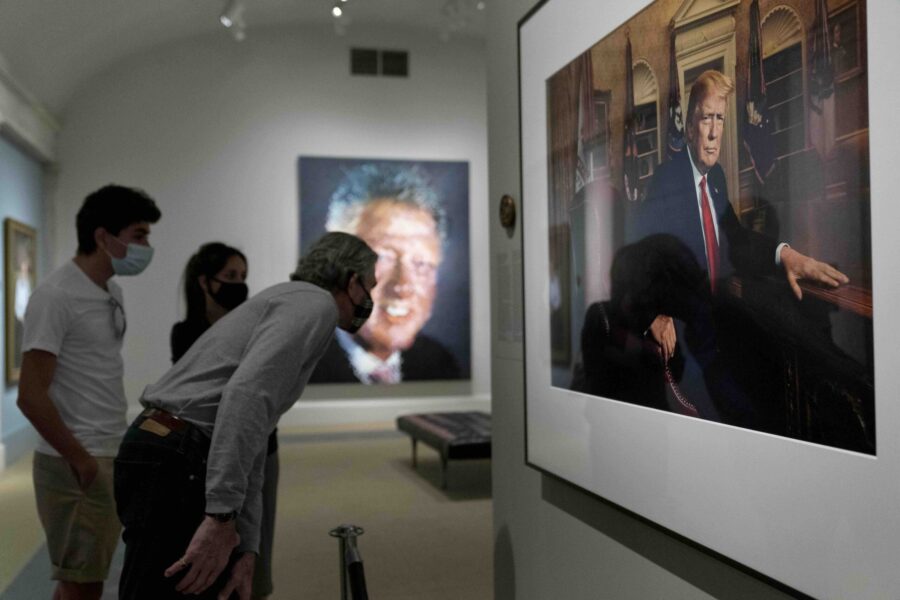Banksy’s Piranhas — one of the most striking works the elusive street artist left across London last summer — has been moved into secure storage ahead of its permanent display at the London Museum’s new Smithfield site, opening in 2026.
The piece transforms a police phone box into an aquarium, filled with hand-painted piranhas. Shortly after its appearance, the City of London Corporation removed the work for safekeeping and displayed it temporarily at Guildhall, where visitors could view it behind barriers. Now, it will take its place as part of the permanent collection at the museum’s new home.
“With Banksy’s Piranhas, our collection now spans from Roman graffiti to contemporary street art. This work now belongs to Londoners, and it will resonate powerfully when shown in our new museum,” said Glyn Davies, curator at the London Museum.
Piranhas was one of nine animal-themed works Banksy unveiled across the city last year, including a rhino perched on top of a car, the silhouettes of two elephants reaching toward one another, and three monkeys swinging from a bridge. While some works disappeared quickly or were damaged, Piranhas has now secured its place in London’s cultural landscape.
“Banksy’s Piranhas has become part of the city’s legend. Now it will be permanently on show at the London Museum, where millions will be able to experience it,” said Brendan Barns, Chair of the City of London Corporation’s Culture, Heritage and Libraries Committee.
Chris Hayward, the Corporation’s Policy Chairman, added: “This work captured Londoners’ imagination. We are not only preserving the city’s unique history but also adding one of the museum’s star attractions for millions to enjoy.”
When it opens in 2026, the London Museum at Smithfield will showcase Banksy’s street art alongside Roman graffiti and other historic treasures. Its Docklands branch will remain open to visitors.
Formerly known as the Museum of London, the institution closed its London Wall site permanently in December 2022. The new Smithfield location, part of a £222 million relocation project, is expected to draw two million visitors annually and create more than 1,500 jobs.







